Imagine this: It's 2023, your email subscribers are converting, your bounce rate is dropping, and the revenue you earn from your email marketing campaigns is reaching new heights.
Sounds great, doesn't it? But those results are possible only if your email marketing is future-ready.
The global email marketing industry is forecast to reach $17.9 billion by 2027. And if you want a slice of the pie, you must realign your email marketing strategy to stay relevant in the ever-evolving digital landscape.
Customers' behavior is changing. Your potential leads are savvier and intentional about what content they consume online and how they consume it. As a result, personalization and data-backed insights are more critical than ever for making meaningful connections with your audiences.
Here are five ways to overhaul your email marketing strategy in 2023.
1. Double-down on personalization
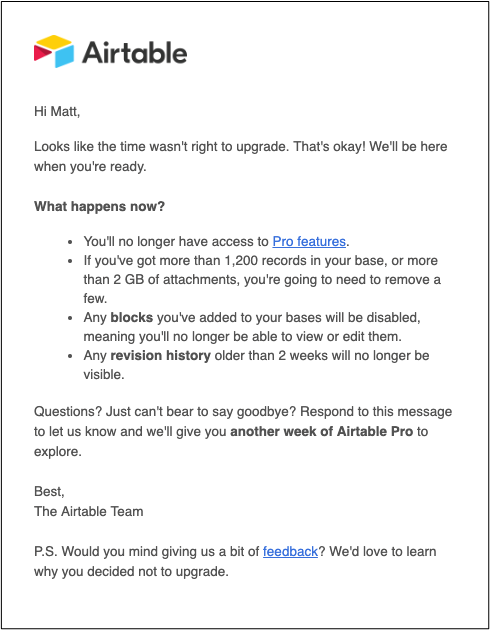
Source: SendGrid
One of the best email marketing tactics for businesses is to get personal with potential leads by sending tailor-made messages. You'll have a higher open and clickthrough rate, more engagement, and increased revenue as a result.
Although many brands now understand the value of personalization in email marketing, most still need to use it to its full potential.
Email personalization should use data-driven insights to take a strategic approach to creating a personal experience for each subscriber.
Personalization tactics include...
- Using segmentation: Segmenting your email list means grouping your recipients based on parameters such as demographics, location, and buying behavior.
- Considering browsing history: By analyzing users' browsing history and interactions on your website, you can personalize their emails accordingly and send tailored offers to increase the likelihood of conversion.
- Taking advantage of important dates: You can use important dates such as birthdays to send personalized greetings or even discount offers for products your targeted leads are interested in.
- Employing trigger emails: A trigger email is a message you send to recipients after they complete an action on your website, such as buying a product, trying a demo version, or signing up for a newsletter subscription.
- Sending emails from a specific person: Instead of using your business name as the sender address, you can use a person's name to build a more personal connection.
Email personalization is about making subscribers feel like more than a number on your list.
For example, a campaign by legal service platform The Expert Institute sent personalized emails from its vice-president George Cuchural.
Each email addresses the recipient by name and informs the reader that George will be the primary business contact. The email has a warm, friendly tone and lets the reader know that George is available to answer questions.
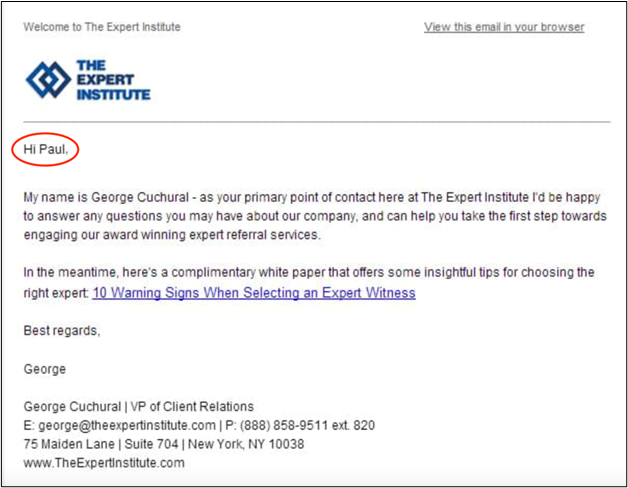
Source: drip
2. Create more value
As you realign your email marketing for better performance, focus on creating value for your customers through relevant and valuable content.
Emails should contain a balance of value, insights, and promotion. For instance, instead of hard-sell pitches all the time, share content that is helpful to your target, such as guides and how-tos. People will unsubscribe if you promote too much; but if you don't sell enough, they will lose track of your business's purpose and won't become customers. The trick is to find the sweet spot between those elements and create a formula that works for you.
In this eye-catching B2B email, Obviouslee offers small businesses the chance to use its PR services at no cost. And it does so in a playful way: by parodying the Fresh Prince of Bel Air's theme song.
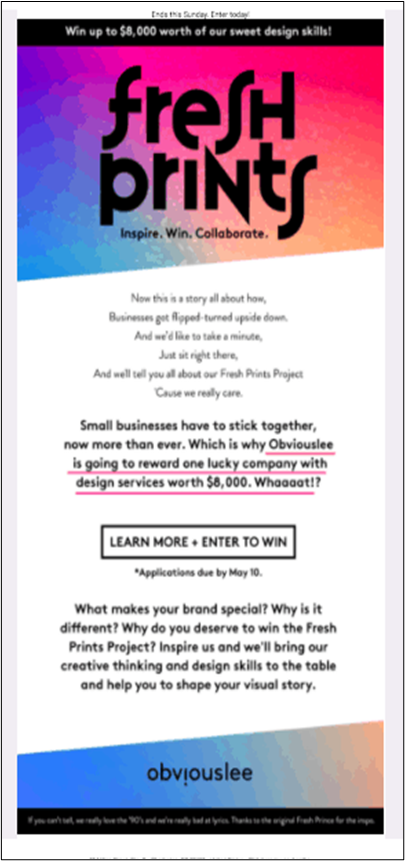
Source: ZENMEDIA
3. Incorporate user-generated content
Your potential leads are more likely to pay for a product or service recommended by others, via online reviews, word-of-mouth recommendations, and user-generated content (UGC).
UGC is a powerful way to increase trust among your prospects and drive conversions through authenticity and transparency, which are at the core of a successful business's brand identity and culture.
Fully 92% of consumers say user-generated content is more trustworthy than traditional advertising, according to Nielsen's Consumer Trust Index. People trust UGC because it comes from people with whom they identify. The content is organic, coming directly from the customer, so your audience is more likely to trust it.
One way to incorporate UGC into your email marketing is to include customer testimonials in your emails. Doing so not only shows prospects that others are happy with your product but also helps you convey your brand values effectively.
As shown in the following image, EmailOctopus sent its users an email with examples of signup forms that other users designed with its email marketing software. That way, the potential leads could see what features and options EmailOctopus offers and perhaps get inspired to use it as well.
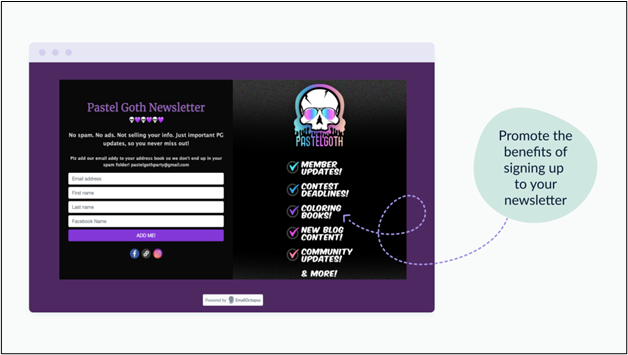
Source: EmailOctopus
4. Conduct A/B testing
If you are not testing, you are guessing. But many companies don't test enough.
Using A/B testing, you can find out what works best for your subscribers and, more important, test new ways to grow your email list.
You can test content, layout, CTAs, subject lines, and functionality to attract more leads, get more engagement on your emails, and boost sales. It's one of the best ways to make email marketing more effective.
5. Use automation to improve your results
Automation is the hottest trend in digital marketing right now, and it is here to stay. It can streamline the repetitive tasks of your business and increase overall productivity by automating workflows based on triggers and actions.
For example, you can set up a nurture email campaign to target people who abandon the checkout process, and continue building a relationship with them until they make a purchase. You can also set up drip email campaigns to nurture your leads through a sequence of emails until they are ready to purchase a product. The opportunities for automation are endless.
However, it is crucial to find a balance between automation and personalization. A good rule of thumb is to use automation based on user behavior or customer lifecycle stages and align personalized messages with the customer's interests and needs.
Unbounce is a good example of using automation well. The company sends a thank you email to users who have just downloaded a piece of its content. As part of its efforts to promote its reputation as a valuable resource, the company also uses the opportunity to link readers to other content on its resources page.
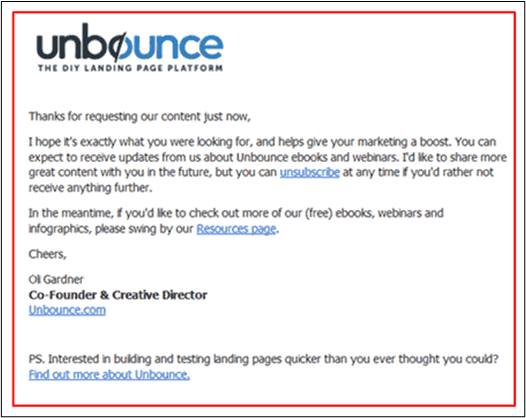
Source: ZENMEDIA
* * *
The digital landscape is evolving fast, so it is crucial to use technology to improve your business performance and stay ahead of the competition. Personalization and data-driven marketing are essentials for modern email marketing.
However, it is vital to prioritize interactions and engagements over mere sales pitches if you want your email marketing to be successful in the long run.
More Resources on Email Marketing Strategy
Seven Post-Purchase Email Conversations That Will Foster Customer Trust and Loyalty




